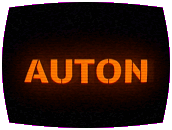
This is afan-made production whose storyline may be invalidated by later official studio productions.
In the immediate aftermath of the Sentinel Island incident, UNIT investigators are concerned by the sudden disappearance (rather than fiery destruction) of the Nestene Consciousness creature. Lockwood warns that he may have inadvertently made their return possible sooner rather than later, thanks to his brief psychic link with Natasha Alexander, the new UNIT scientific advisor. And the Autons do reappear ahead of schedule, but acting strangely. Dr. Arnold is pressed into the dangerous investigation by Palmer, who himself turns out to be another psychic with his own link to Natasha. Increasingly, UNIT is convinced that Lockwood has returned to the Autons and poses a danger to Earth, but only Dr. Arnold and Natasha seem to be prepared to believe that he still remains loyal to humanity.
screenplay by Arthur Wallis (a.k.a. Nicholas Briggs)
additional material by Paul Ebbs
directed by Patricia Merrick and Bill Baggs
music by Alistair LockCast: George Telfer (Graham Winslet), Helen Baggs (Nurse), Andrew Fettes (Sergeant Ramsay), Bryonie Pritchard (Dr. Sally Arnold), Peter Trapani (Dalby), Graeme du Fresne (Palmer), Michael Wade (Lockwood), Jo Castleton (Natasha Alexander), Blaine Coughlan, Alex, Steve Johnson, Peter Trapani (Autons)
Review: As a rule, I try to concentrate on constructive advice when it comes to reviewing fan-made productions, simply because these aren’t shows with a ton of money behind them: they’re labors of love. However, Auton 3, the (thankfully) concluding chapter of the Auton trilogy, is nearly a decade old at the time of this review, so I’m not exactly sure this review will truly have anything new to say that the film’s makers haven’t already heard.
 To offer a broad criticism of its biggest failing, Auton 3 compounds and magnifies the problems that began to creep into the story with the trilogy’s second entry. The whole “psychic influence” angle felt out of place in Auton 2: Sentinel, and it’s brought front and center here to serve as the main weapon humanity has against the plastic invaders. The interaction between Lockwood and the rest of the Autons is very strange indeed, and apparently a ludicrous number (said at one point to be “billions” – what!?) of enormous Nestene squids are buried alive somewhere on Earth, doing things and exhibiting powers that are simply out of line with nearly everything the Nestene/Auton stories established in Doctor Who. Those expecting this to feel like a part of the Doctor Who universe may be in for a shock.
To offer a broad criticism of its biggest failing, Auton 3 compounds and magnifies the problems that began to creep into the story with the trilogy’s second entry. The whole “psychic influence” angle felt out of place in Auton 2: Sentinel, and it’s brought front and center here to serve as the main weapon humanity has against the plastic invaders. The interaction between Lockwood and the rest of the Autons is very strange indeed, and apparently a ludicrous number (said at one point to be “billions” – what!?) of enormous Nestene squids are buried alive somewhere on Earth, doing things and exhibiting powers that are simply out of line with nearly everything the Nestene/Auton stories established in Doctor Who. Those expecting this to feel like a part of the Doctor Who universe may be in for a shock.
Now, that said, I would’ve been happy had this last film wrapped up the first two and clarified some of their respective mysteries, and at least capped off a nicely self-contained story that simply uses some trappings of the Doctor Who continuity, but we don’t even get that – instead we get a grim, tentative ending and an hour of story that seems to hang together on coincidence and loosely defined psychic interactions with the Nestenes. There are some relatively nice CGI effects (for something made on video in 1999), but it’s ultimately a victory of style over substance. (I would say something about the squid-like Nestene looking nothing like it did in the 1970s, but that argument is rendered meaningless in retrospect when the first episode of the new Doctor Who in 2005 gave us a pit-of-molten-something as its visualization of a Nestene. I guess there are many flavors of Nestene, and a purple pulsating CGI squid is just one of them now.)
In the end, perhaps the Auton story would’ve been best served if its pilot-episode-ish first installment had been the beginning and end of it – something ripe with promise that invites the viewer to imagine what adventures lie ahead for Dr. Arnold, Lockwood & company. Instead, the trilogy takes increasingly strange turns that diverge from the established mythology more and more with each succeeding chapter, and never quite lives up to that air of promise hanging from the end of Auton. It’s a pity, but the new names in the writing credits perhaps give us the biggest clue to where fan productions were headed at this time: Nicholas Briggs, who wrote and directed the first two Auton videos, is absent for the third round, having signed on with Big Finish, which was launching its officially licensed Doctor Who audio adventures at around this time (Auton 3 was released in 1999). Internal political concerns within the BBC saw Briggs and other former fan production heavyweights such as Gary Russell distance themselves from BBV’s Bill Baggs, who had released and promoted all three Auton chapters; with new audio-only adventures featuring original Doctor Who actors as their original characters, fandom’s tastes – and spending habits – shifted decisively away from BBV’s “all-the-trappings-of-Doctor-Who-except-the-Doctor” video productions and toward Big Finish. Doctor Who fan films would soon be few and far between, but nobody could’ve realized that this gap would be filled, in just a few years, by an unexpectedly successful return to television for the franchise.
And ironically, when the TARDIS returned to TV, the new Doctor’s first enemies were the Autons.
